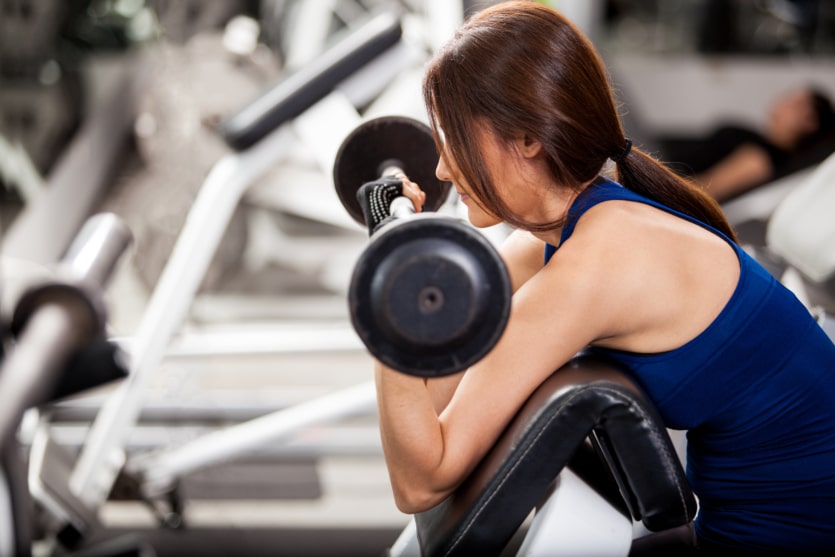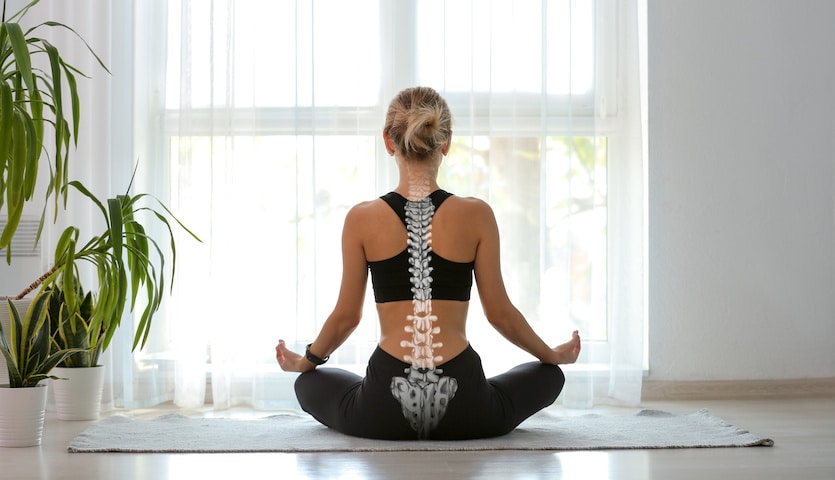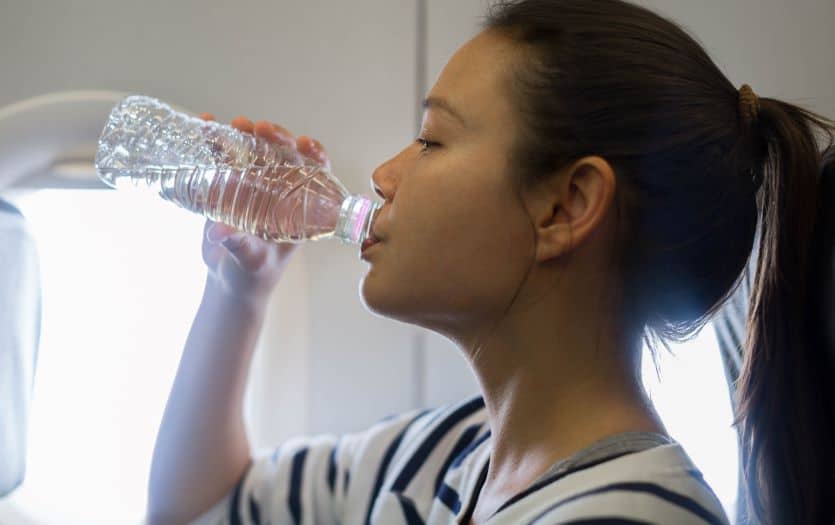
Weight loss is rarely a straight path. One of the biggest challenges along the way is the risk of losing muscle while trying to lose fat. Unintended muscle loss can lead to slower metabolism, reduced strength, less tone or definition, and even long-term health risks.
The best strategy for maintaining muscle while losing weight is to adopt a balanced, health-focused approach that supports fat loss while preserving lean muscle. With the right combination of nutrition and exercise, you can achieve sustainable results that go beyond the number on the scale.
Understanding Healthy Weight Loss
Healthy weight loss takes patience and effort. Part of the goal is to lose fat while preserving as much lean muscle as possible. This means your progress is measured by more than just the number on a scale. You need to take your entire body composition into account.
Body composition refers to both the percentages of lean mass (muscles, bones, organs, water, etc.) and fat mass (essential and stored fat). Your everyday bathroom scale may measure your total body weight, but it can’t tell you how much of that weight is muscle or fat.
For example, you could lose five pounds on the scale, but if three of those pounds are muscle, that’s not ideal. Alternatively, you might see no change on the scale, but your clothes fit better because you’ve lost fat and gained muscle.
Rather than jumping on the scale, try measuring your progress through the following:
- Photos
- Measurements (waist, hips, arms, etc.)
- How your clothes fit
- Strength levels in the gym
- Body composition tests (bio-electrical impedance, hydrostatic weighing, Bod Pod, DEXA); note that these tests provide more detailed information but do come at a financial cost
Focusing on your overall body composition will help your overall health as you work toward your goals.
Muscle Loss During Weight Loss
Many people think that weight loss is simply about cutting calories—but it’s more complex than that. While a calorie deficit is necessary to lose fat, it can also lead to muscle loss if not managed carefully.
The good news is that muscle loss isn’t inevitable. By understanding the key factors that influence muscle retention—like protein intake, strength training, digestion, and micronutrients—you can minimize muscle loss and focus on losing fat while preserving lean mass.
Proteins and Amino Acids
Muscle tissue is primarily composed of protein, which is made up of amino acids. Getting enough of these nutrients is highly important for retaining muscle mass—especially when you’re in a calorie deficit during weight loss.
When your body doesn’t get enough energy from food, it may start breaking down muscle for fuel. With adequate protein intake, you can help protect your muscle tissue and support recovery.
Essential amino acids (especially leucine) play a key role in triggering muscle protein synthesis—the process of building and repairing muscle tissue. Without enough of these amino acids, your body can’t effectively maintain or rebuild muscle, even if you’re exercising.
To support muscle retention:
- Choose high-quality protein sources that contain all essential amino acids (like dairy, eggs, soy, or protein blends)
- Distribute protein intake evenly across meals—every 3 to 4 hours—to keep muscle-building processes active throughout the day
- Consider protein supplements if you’re not meeting your needs through food alone
Protein and amino acids are your muscles’ best defense during weight loss to help you lose fat while staying strong and lean.
Strength Training
When you’re in a calorie deficit, your body looks for energy wherever it can find it. Without a clear reason to keep muscle, it may start breaking down. Balance your weight loss with exercise—especially strength training—to help preserve muscle and support a healthy metabolism.
Resistance training is a critical tool for muscle maintenance. This includes any exercise that causes your muscles to contract against an external resistance, including:
- Free weights (like dumbbells or barbells)
- Resistance bands
- Bodyweight exercises (push-ups, squats)
- Weight machines
- Water resistance or suspension training
To get the most benefit:
- Gradually increase weight or resistance
- Aim for 2-4 sessions per week
- Prioritize compound movements that work multiple muscle groups.
Strength training isn’t just about looking fit—it’s about staying strong, healthy, and metabolically active.
Digestive Health and Nutrient Absorption
Your body needs to efficiently extract and use nutrients—especially protein, amino acids, vitamins, and minerals—to support muscle repair and growth.
If your digestion is compromised (due to poor gut health, low fiber intake, or GI distress), you may not absorb enough of these essential nutrients, even if you’re eating well. Poor diet can lead to nutrient deficiencies, reduced muscle protein synthesis, and ultimately, greater muscle loss during weight loss.
Micronutrients and Supplementation
While protein and resistance training are the main drivers, micronutrients help your body function optimally, ensuring that muscle maintenance can happen efficiently. Different vitamins and minerals support muscle function and repair. For example:
- Magnesium is involved in muscle contraction and recovery
- Vitamin D supports muscle strength
- Calcium is important for muscle contractions and bone health
- Zinc plays a role in tissue repair and hormone production (like testosterone)
When you’re eating less, it’s easier to fall short on essential vitamins and minerals. Deficiencies can impair energy production, muscle recovery, and immune function, all of which are critical during weight loss.
When you fall short in micronutrients, supplements may fill the nutrient gap in your diet. A high-quality multivitamin can act as nutritional insurance. Specific supplements like vitamin D, magnesium, or omega-3s may be beneficial depending on your needs. However, they do not compensate for eating too much or unhealthily.
Pitfalls to Avoid
Some weight loss management strategies sound too good to be true—and often, they are. Approaches like fad diets, extreme restrictions, or cutting out entire food groups may promise fast results, but they can lead to muscle loss, nutrient deficiencies, and digestive issues.
Avoid the temptation to chase quick fixes over sustainable habits, ignore nutrient balance in favor of calorie cutting, or overtraining without allowing time for recovery. These mistakes can sabotage your progress and harm your long-term health.
The healthiest strategy is a balanced, sustainable approach that prioritizes adequate protein and nutrient intake to support muscle and overall health, consistent resistance training to preserve lean mass, and rest and recovery to allow your body to rebuild and adapt.
Building a Balanced Diet for Sustainable Results
The components of a well-rounded diet include macronutrients, fiber, vitamins, and minerals to support overall health and muscle maintenance. The following sample menu may help inspire ideas on how to build your own balanced diet. Notice how protein sources are spread throughout the day.
Breakfast
- 3 scrambled eggs with spinach and tomatoes
- 1 slice of whole grain toast
- 1 small apple
- Black coffee or green tea
Snack
- Greek yogurt (plain, non-fat) with a handful of berries and chia seeds
Lunch
- Grilled chicken breast
- Quinoa or brown rice
- Steamed broccoli and carrots
- Olive oil and lemon dressing
Snack
- Protein shake or smoothie with banana, almond butter, and unsweetened almond milk
Dinner
- Baked salmon or tofu
- Roasted sweet potatoes
- Mixed greens salad with avocado and pumpkin seeds
Optional Evening Snack
- Cottage cheese with a few walnuts or a boiled egg
Remember to stay hydrated; water supports digestion, nutrient transport, and muscle function.
Balance, Patience, and a Health-First Mindset
The key to maintaining muscle mass while losing weight lies in embracing a long-term, health-focused approach. Sustainable progress isn’t about quick fixes—it’s about building habits that support your body inside and out. Prioritize balanced nutrition, regular exercise, hydration, and adequate micronutrient intake to fuel your body and protect your muscles.
Remember, your overall health is the foundation of lasting results. Stay patient and consistent as you focus on feeling stronger—not just lighter.
References
https://jissn.biomedcentral.com/articles/10.1186/s12970-017-0177-8
https://www.webmd.com/diet/high-protein-diet-weight-loss
https://www.webmd.com/obesity/features/muscle-and-weight-loss
https://pubmed.ncbi.nlm.nih.gov/37142892/
https://www.eatingwell.com/how-to-maintain-muscle-mass-while-losing-weight-8706542
https://dr-muscle.com/training-maintain-muscle-fat-loss/
https://gcperformancetraining.com/gc-blog/how-to-maintain-while-losing-weight
https://www.loseit.com/articles/how-to-preserve-lean-muscle-mass-while-losing-weight/
https://askthescientists.com/health-weight-loss/#toggle-id-1
























